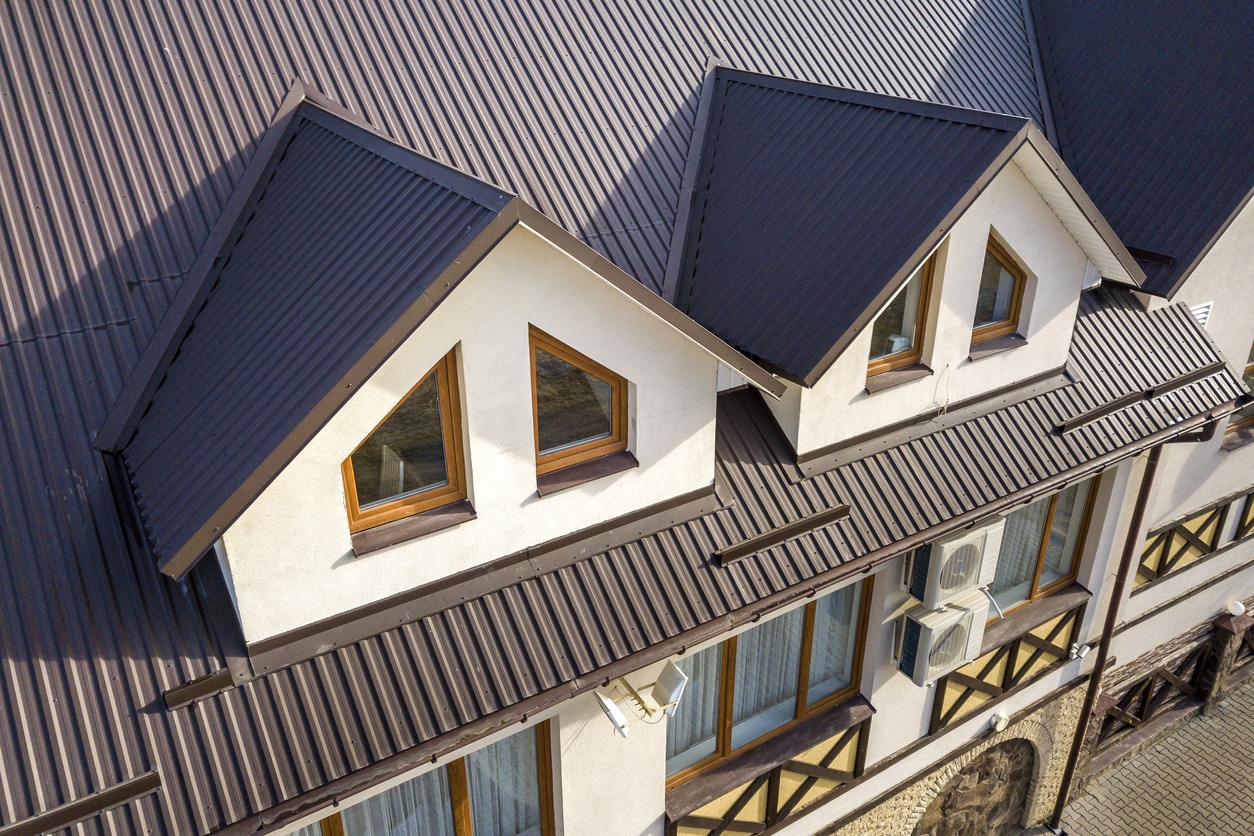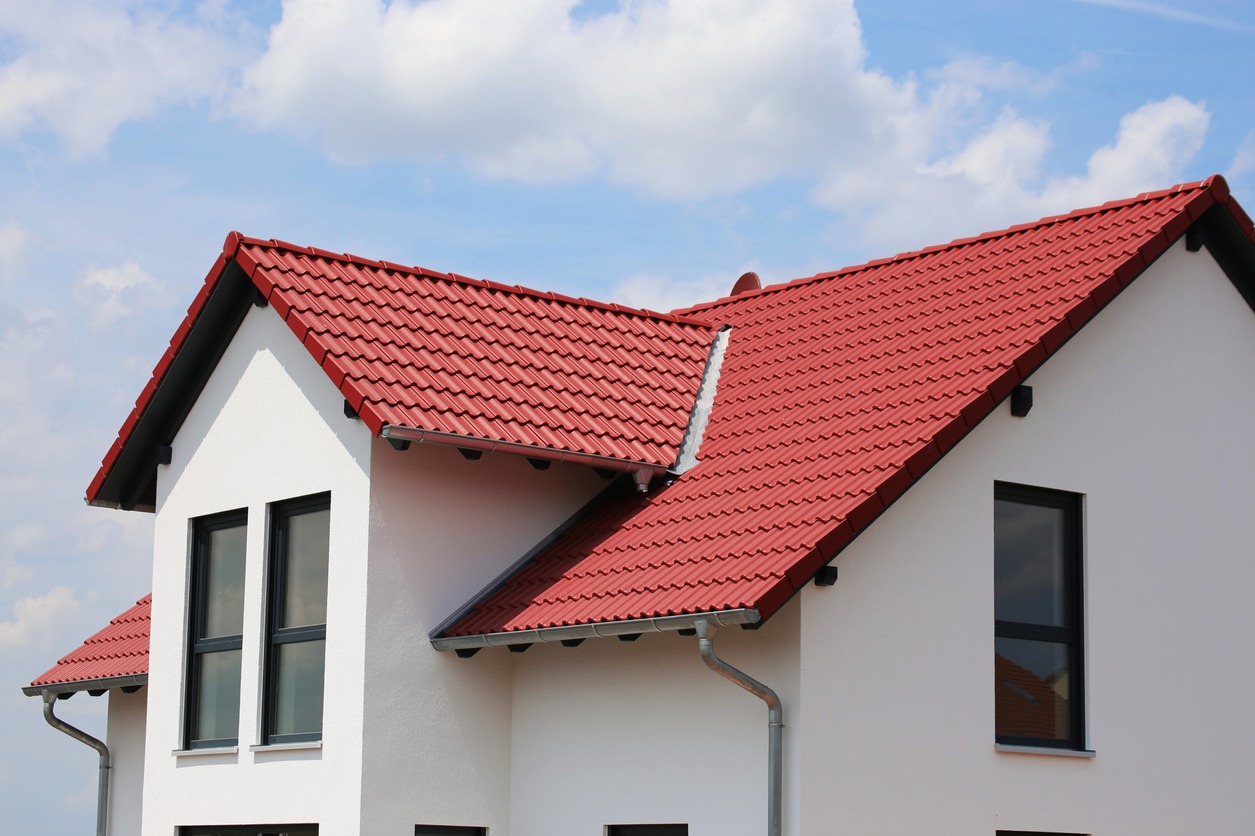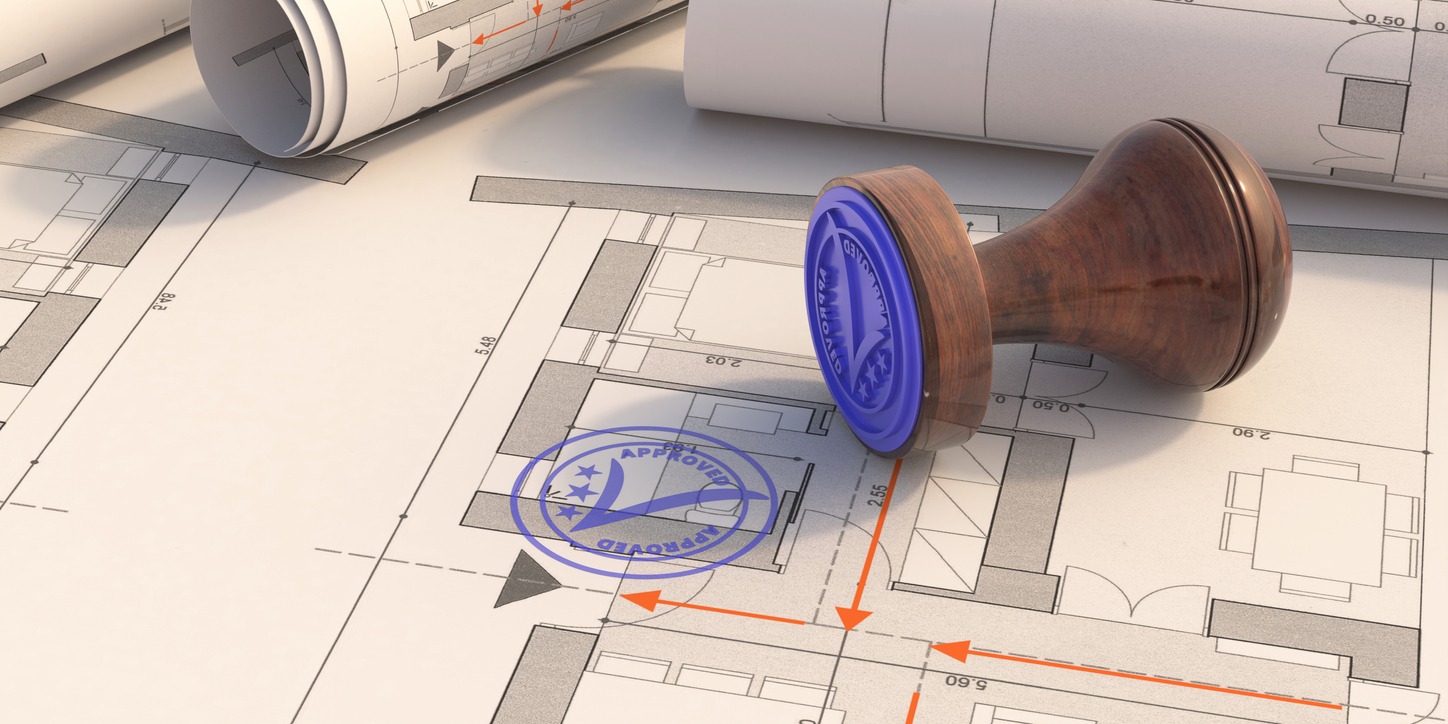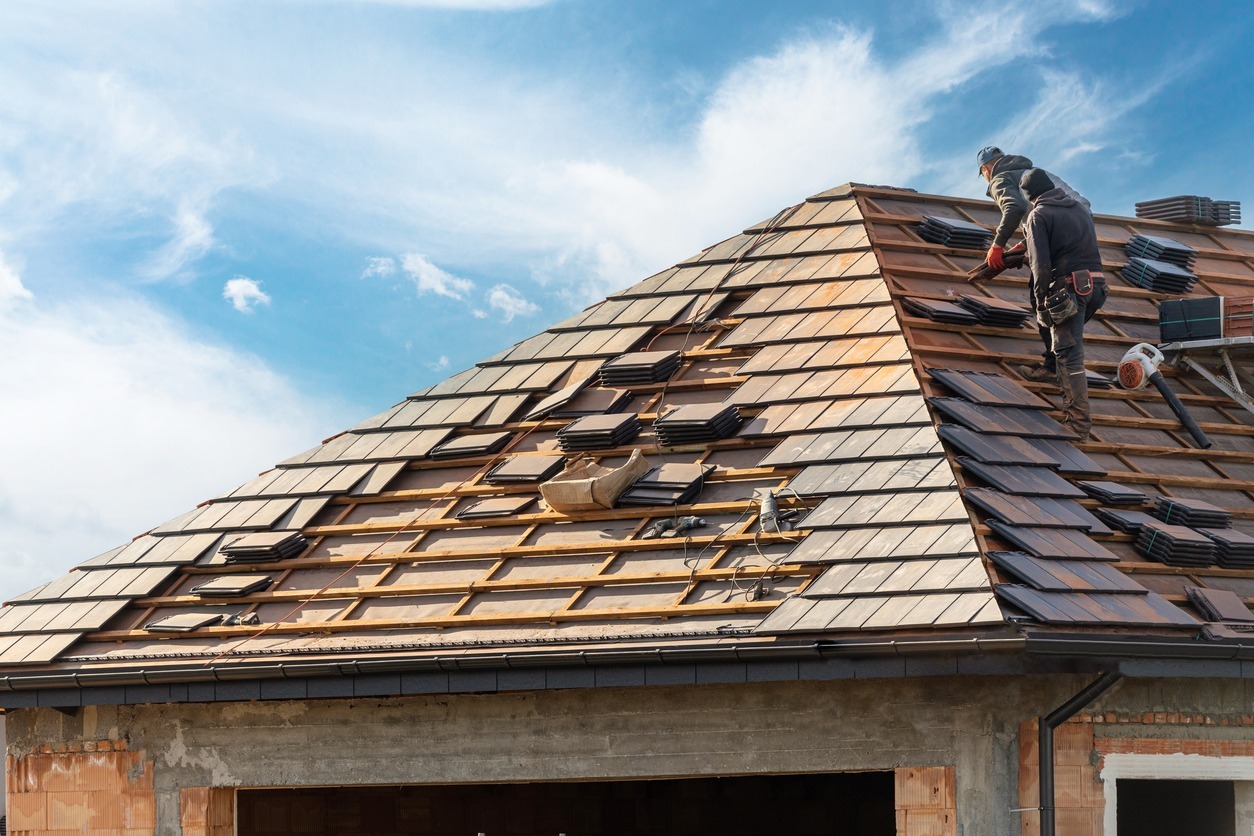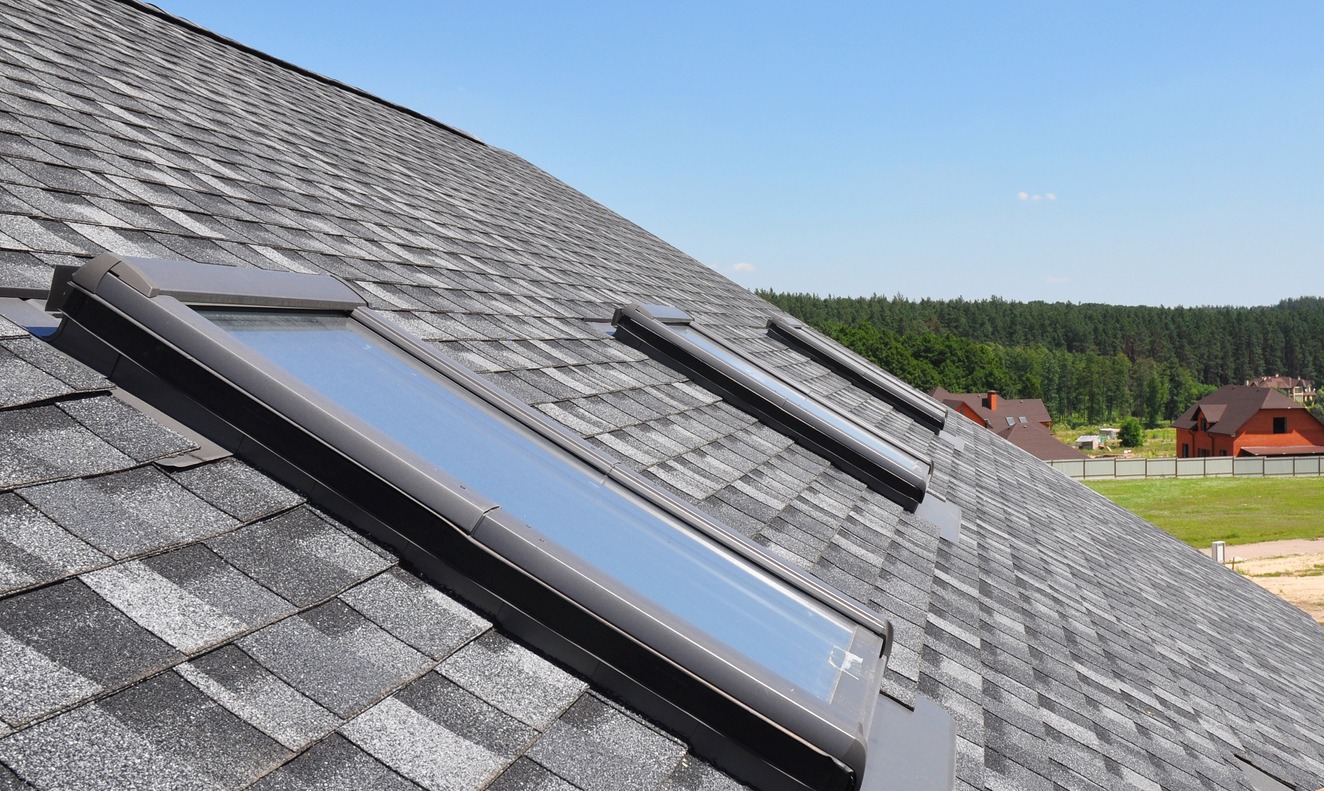Just like any other part of your home, your roof has a limited lifespan. Over time, small cracks from regular wear and tear can cause leaks that result in water damage, and deteriorating shingles can even lead to the ceiling weakening. While roof replacement might initially seem like a daunting task, there are several ways you can plan your budget and stay relaxed throughout the process.
The typical cost of replacing a roof ranges from around $5,000 to $12,000 for most homeowners. Since your roof is a complex component of your home, replacing it can be a bit intricate. This guide simplifies the essential information you require to get ready for the expenses associated with either getting a new roof or repairing the existing one.
This guide breaks down important information you need to know so you can prepare for the cost.
Factors that Affect Roof Replacement Costs
Here are the things that add up to the total cost of replacing a roof:
Size
On average, replacing a roof costs between $4.35 and $11 for each square foot. Generally, if your home has a larger area, you can expect a higher expense. Additionally, roofs with steeper pitches tend to have more square footage, which can also influence the cost. Here’s a rough idea of the cost for different home sizes:
| Roof Size (Square Feet) | Average Cost |
| 1,000 | $4,350 to $11,000 |
| 1,500 | $6,525 to $16,500 |
| 2,000 | $8,700 to $22,000 |
| 2,500 | $11,000 to $27,500 |
| 3,000 | $13,050 to $33,000 |
Roof Pitch
Replacing steep roofs requires more specialized equipment for roofers. The slope of a roof is measured by how much it rises within each 12-inch depth. For instance, a 6:12 roof pitch ascends 6 inches for every 12 inches towards the peak, creating an angle of about 26.57 degrees. Roofers typically find pitches exceeding 6:12 more intricate and risky to work on, and this might lead to additional charges.
Common roof slopes include 3:12, 6:12, and 12:12. Flat roofs come with a lower price range, typically ranging from $4 to $30 per square foot. Homeowners with steeper roofs often face an added cost of $1,000 to $3,000.
Number of Floors
Replacing a roof on a home with multiple floors takes more time and effort. Roofing experts dealing with taller houses need additional ladders and safety gear, and they invest more time hauling materials and equipment up. If your home has three stories or more, anticipate higher labor expenses.
Material
The material you choose for your roof significantly affects the cost. Asphalt or composite shingles are popular due to their affordability and easy installation. Tile roofing provides a great balance between durability and cost-effectiveness. You’ll find various options, including ceramic, metal, wood, clay, concrete, and slate tiles. If longevity is your priority, metal roofs, often crafted from copper or zinc, are pricier but extremely durable.
Learn more about each roofing material and its average cost per square foot below.
- Asphalt Shingles ($4.25 to $8.25): Asphalt shingles are a common and budget-friendly choice. They’re light, adaptable, and easy to install. Basic ones are cheaper, while premium options cost more.
- Flat Roofing ($5.50 to $7.50): Materials like EPDM are affordable upfront, but repair or replacement labor could be more expensive.
- Corrugated Metal ($5.50 to $11.50): Simple to install and maintain, corrugated metal offers durability and resistance to impact.
- Aluminum Shingles ($6 to $16): Equally durable as other metals but more cost-effective.
- Cedar Shingles or Shakes ($8 to $14.30): Wood shingles enhance aesthetics but need more upkeep and can be vulnerable to pests and mold.
- Standing Seam Metal Panels ($10 to $17.05): Low-maintenance and enduring, though some metals aren’t ideal for wet climates due to potential rust from pooled water.
- Steel Shingles ($10 to $20): Very durable, with stainless steel being pricier.
- Concrete Tiles ($11 to $19.80): Sturdy and long-lasting, albeit with a higher initial investment.
- Copper Tiles ($12 to $20): Among the costliest, but with lasting quality and an appealing patina.
- Slate Tiles ($12 to $22): Durable but might require additional roof support due to weight.
- Clay/Ceramic Tiles ($12 to $24.75): Durable and customizable, yet expensive.
Labor
Around 40% of the total cost of replacing your roof will account for materials, while the remaining 60% is allotted for labor expenses. The labor payment hinges on the kind of roofing material in use. Most roofing contractors have a lot of experience with asphalt shingles. However, pricier or more delicate materials might require a specialist with a higher professional fee.
Typically, professional roofers charge approximately $11 per square foot, which equates to around $60 per hour. If you schedule your roof project during the high-demand summer months, the cost will surely add up. In cases where your home has three or more stories or the roof is steep and challenging to reach, added installation charges might apply. Similarly, intricate roof designs featuring multiple skylights and chimneys can also lead to higher prices. The complexity and potential hazards of the task directly influence the overall labor cost.
Location
Similar to any home improvement project, your roof replacement expenses will be influenced by local labor rates and the fluctuation of material costs. Anticipate higher expenses in metropolitan regions and places with higher costs of living.
Specific climates might also need pricier roofing materials that can endure heat, cold, and intense storms. Similarly, places experiencing heavy rainfall or snowfall might need robust waterproof roofing solutions.
Also, roofers might charge more if they’re working in extreme conditions, such as severe cold or heavy snow. Additionally, different localities and homeowners associations could have distinct permit prerequisites along with associated fees.
Permits
When it comes to obtaining permits for a new roof, the cost usually falls between $100 and $1,000, depending on your city’s regulations. It’s also important to note that some homeowners associations (HOAs) might demand prior approval for factors like shingle color or style. Ensuring you have these necessary approvals can prevent costly replacements down the line. Remember that permits might take a few weeks to get approved, so securing them in advance can help speed up your development.
Insurance
If your homeowner’s insurance covers the cost of roof replacement, it can significantly affect your budget in a positive way. If you’re replacing your roof because of storm damage, your homeowner’s insurance will likely assist with the expenses. However, typical policies usually don’t extend to covering regular wear and tear caused by environmental factors. Coverage for damage from events like earthquakes, mold, animals, pests, or faulty installation is also quite rare. No matter the situation, it’s crucial to thoroughly go over your insurance policy before moving forward with a roof replacement.
Additional Factors
There are other cost factors to consider when planning a roof replacement project:
Roof inspections
Your local government may require a building inspector to inspect the project at multiple points during installation. Be sure to review your municipality’s guidelines to determine if you should factor in extra expenses for these roof inspections.
A skilled roof inspection identifies damage, assesses areas needing repair or replacement, and provides an overall evaluation of your roof’s current condition. When seeking a roof inspection, your best choice is a professional roof inspector or an experienced roofer. In some cases, these experts might even waive the inspection fee if you hire them for the repair work.
You might find a roof inspection necessary if it hasn’t been conducted recently (usually yearly is recommended), if you’ve noticed ceiling leaks, faced recent storms, or are in the process of selling or refinancing your home. If you have homeowner’s insurance, they might be able to help connect you with a suitable professional for the task. The typical cost for a roof inspection ranges from $75 to $800.
Removing the old roof
If you’re redoing your old roof, you can anticipate allocating an average of around $1,250 for removal before the new roof installation begins. Typically, this segment of the project comes in at around $1 to $5 per square foot, or roughly between $1,000 and $1,500. Your contractor might itemize this cost separately, yet it’s also common to incorporate the removal within the overall price of a roof replacement.
There are several factors at play that can sway the cost of removing your existing roof. More layers in the underlayment and heavier materials usually lead to higher labor expenses. Moreover, you might need to budget for things like renting a dumpster or transporting the old materials away.
In certain places, getting rid of asphalt shingles, which are considered a hazardous building materials by some authorities, might come with a steeper price tag. Removing shingles can be complex, tacking on an extra cost of about $1 to $5 per square foot.
Cleanup and disposal expenses
When you’re taking off an old roof before putting a new one in place, be ready for extra costs associated with cleaning up and properly disposing of the old materials. Your contractor might impose an added fee to factor in the increased labor and potential dumpster rental expenses. These charges can come in the form of separate line items or a lump sum for material disposal. Many roofers include this in their labor charges.
Correcting structural issues
If there are underlying structural concerns beneath the old roof – like decayed wood, leaks, gaps, or pest problems – this might lead to additional expenses on your bill. Repair costs for roof issues can differ based on the particular problem, while pest removal usually runs around $200 to $600.
If you’re dealing with more serious problems, such as compromised rafters or trusses, you might need to enlist the assistance of a local structural engineer to guide the repair process. If any part of the roof’s structure needs replacement due to compromised integrity, this could tack on several hundred or even thousands of dollars to your overall roof replacement expense. Truss costs typically range from $35 to $400 each, although intricate roofs might require specialized and pricier trusses.
As a general rule, the older your roof is, the higher the likelihood of requiring additional structural repair. It’s wise to take action as soon as your roof shows replacement needs, as water damage, pests, and other issues can easily accumulate extra costs.
Roof warranty
A warranty from your contractor usually falls within the range of $500 to $2,000, depending on the project’s extent. On the other hand, manufacturer warranties can span from $500 to over $5,000. You’ll likely also have the chance to opt for an extended warranty to cover materials, albeit at an extra cost. It’s worth noting that aftermarket warranties for your roof could impact your home’s value, especially if you’re considering selling in the near future. If you choose to go for an extended warranty, find out whether it’s transferable to a new owner and the timeline for making the transfer.
Roofing warranties offered by the roofing contractor often bring value due to their inclusion of yearly inspections and minor fixes, such as replacing missing shingles or fixing flashing. This is a topic you should discuss directly with the specific company you hire.
The decision to purchase a manufacturer’s warranty largely boils down to personal preference. These warranties often encompass materials and sometimes labor, though the labor aspect can involve a distinct process. Manufacturers may require contacting a list of authorized contractors, which could potentially prolong the repair time. Nevertheless, some manufacturers provide warranties that extend up to 50 years for their products and 25 years for workmanship. This proves to be a smart investment, mainly because if the contractor you initially hired goes out of business, you’ll still have the workmanship warranty intact.
Chimneys, skylights, and other roof features
Certain elements of your roof, like chimneys or skylights, could require repairs or even replacements. For instance, a damaged chimney or skylight might lead to leaks. Roofing experts need unique materials to effectively seal these features, which elevates the complexity and difficulty of the roof replacement process, consequently increasing the overall cost.
Adding extra roof features like chimneys and skylights—also called penetrations—will bring in additional expenses due to the extra labor and materials involved. A fixed skylight typically costs around $150 per unit, and you’d need to allocate an extra $500 or more for labor. Replacing a chimney could set you back $5,000 or more, while a partial rebuild usually ranges between $1,000 and $3,000.
Gutter repairs or replacement
It’s possible that your roofing company might observe damage to your existing gutters and suggest replacing them alongside your roof. This could help you save on future home improvement costs. Depending on your roof’s design, contractors might even need to remove your gutter system to ensure proper roof replacement. Both of these roofing undertakings come with added expenses.
Comparing Roof Replacement Costs: DIY vs. Professional Help
Opting to replace a roof by yourself tends to be roughly half the expense of hiring a professional roofer. In other words, while the cost of a new roof varies due to the factors discussed earlier, you can anticipate paying around 50% of the national average cost of $9,158 for roof replacement if you decide to go the DIY route.
Nonetheless, the potential for unexpected and potentially serious costs is notably high if you go DIY. Beyond the inherent danger of the job, an incorrectly installed roof can lead to costly water damage and structural problems and negatively impact your home’s resale value. Unless you hold a valid roofing contractor license, your insurance company will likely reimburse you for any roof repairs or replacements. Hiring a contractor often includes the advantage of a warranty, whereas taking on the work yourself places the responsibility squarely on your shoulders to get it right the first time. Considering these factors and more, we strongly advise enlisting a local roofing contractor for your roof replacement to ensure the task is completed safely and accurately.
Choosing Between Full and Partial Roof Replacement
When only a section of your roof requires replacement, you have the option of doing a partial roof replacement. Naturally, replacing a portion of your roof is less expensive than replacing the entire roof. However, you’ll still need to cover expenses for permits and the removal of the old roofing materials. Moreover, you might incur higher costs per square foot for the materials used. Despite this, the overall cost will still be lower compared to the expense of a complete new roof installation.
Conclusion
Getting a new roof is a substantial investment, so it’s essential to navigate it thoughtfully. Collaborate with a licensed roofing company to ascertain your installation expenses. Take time to explore various roofing materials and inquire about your contractor’s recommendations based on your home and climate. Also, strike a balance between upfront expenses and potential long-term benefits. Opting for higher-quality materials might result in a longer lifespan and fewer instances of repairs and replacements.
